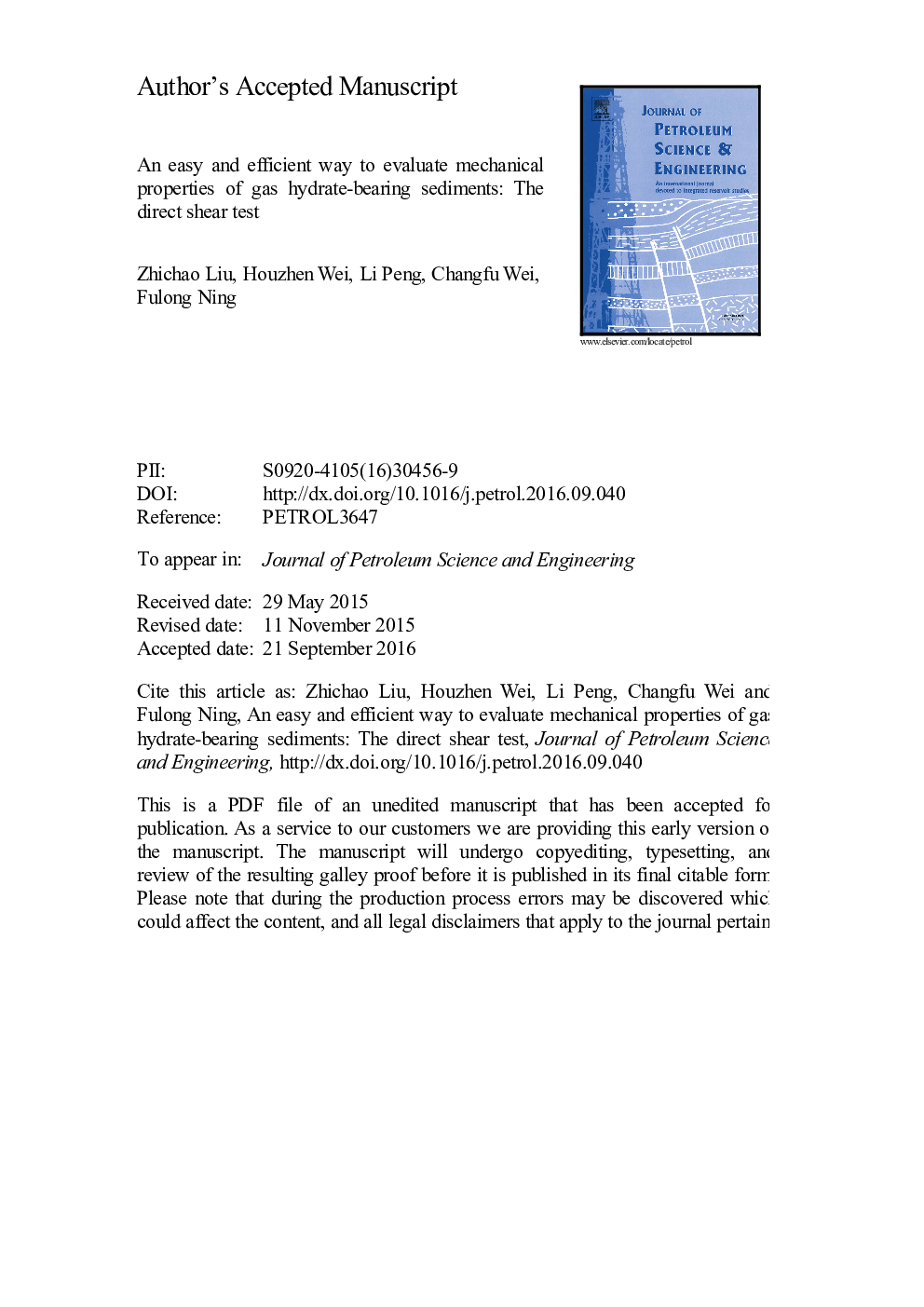| Article ID | Journal | Published Year | Pages | File Type |
|---|---|---|---|---|
| 5484450 | Journal of Petroleum Science and Engineering | 2017 | 25 Pages |
Abstract
Understanding the mechanical behaviours of gas hydrate-bearing sediments (GHBS) is important for their associated applications in wellbore stability, stratum deformation during exploitation, geological disaster prevention, and the risk assessment of replacing CH4 with CO2 in hydrate reservoirs and CO2 sequestration in oceans. However, triaxial tests on mechanical properties of GHBS are taxing and time-consuming. Here, we presented an easy and efficient way to evaluate these behaviours by using a self-developed direct shear apparatus. Then a series of direct shear tests on GHBS represented by CO2 hydrate-bearing silt were performed to investigate their mechanical behaviours and strength indices by changing the axial pressure, CO2 hydrate saturation, shear rate and hydrate synthesis temperature. Our results indicate that CO2 hydrate significantly strengthens specimens by cementing silt grains. In addition, when hydrate saturation increases, the cohesions are enhanced from 0.09 to 2.39 MPa, and the internal friction angles increase and decrease at the range from 28.6° to 43.3° under the experimental conditions. These findings have direct implications for evaluating the stability and safety of natural gas hydrate reservoirs, CO2 replacement to extract CH4 and CO2 sequestration.
Related Topics
Physical Sciences and Engineering
Earth and Planetary Sciences
Economic Geology
Authors
Zhichao Liu, Houzhen Wei, Li Peng, Changfu Wei, Fulong Ning,
